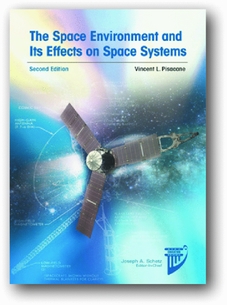
Satellites are a fundamental part of our modern world, underpinning a huge range of services including weather forecasting, communications and satellite navigation. Without them our everyday lives would be very different. Thus, it is vital to understand the ambient environment in space, how it affects space systems and how those systems can be made resilient against adverse effects of the space environment.
This book discusses the many physical phenomena that can have adverse effects on satellites: (a) bombardment of satellites by particle and electromagnetic radiation, by meteoroids and by debris from other satellites; (b) interactions of satellites and their radio systems with the plasmas that are ubiquitous in space; (c) for low-Earth orbits, interactions with the neutral atmosphere (e.g. drag and surface erosion); and (d) the challenging thermal environment of satellites. It also includes a chapter on spacecraft contamination, exploring issues such as outgassing from materials and the vital role of cleanliness during spacecraft construction; it also discusses the role of planetary protection in preventing uncontrolled transport of microbes and other lifeforms between solar system bodies.
The author presents a wealth of material that one can dip into whenever you need to understand some aspect of how systems are affected by the space environment. He starts with a general discussion of system engineering and risk management, thus showing the context in which knowledge of the space environment should be applied. He then moves on to discuss a wide range of background science including fundamental physical concepts (e.g. electric and magnetic fields), broad issues such as the formation and structure of the universe and the solar system, and most importantly, the physical phenomena that make up the space environment.
This background contains much fascinating material, but provides for an erratic focus the science of the space environment: some key issues are well covered, whilst others are dispersed over several chapters. A notable example is the discussion of the solar wind and Interplanetary Magnetic Field (IMF) which is spread over chapters about the Sun, magnetic and electric fields and the magnetosphere. Given the importance of the solar wind and IMF as drivers of the near-Earth space environment, this topic warrants an integrated discussion.
But the biggest problem is that this background skims over, and sometimes omits, fundamental dynamical effects. In particular, there is almost no discussion of the dynamics of Earth's magnetosphere (e.g. substorms, particle energisation) or how the orientation of the IMF controls that dynamic – yet this dynamic is central to understanding many time-varying impacts on space systems, e.g. satellite charging, atmospheric drag, disruption of uplink and downlink. Similarly, there is a limited discussion of relevant dynamics of the Sun, the solar wind, and Earth's upper atmosphere. My overall impression is that the book lacks insight into many of the advances, made over the past 30 to 40 years, in our understanding of the space environment, especially how the near-Earth environment is driven by solar activity.
The author also includes extensive discussion of engineering issues, discussing in detail how various space systems are affected by different features of the space environment, e.g. how individual energetic protons and ions can damage electronic devices. This is the strongest part of the book, and one that I have already found very useful in my own work whilst writing this review. The book is particularly strong in discussing how systems on-board satellites are affected and how these can be mitigated through good practice in design and operation of satellites. It is weaker when it comes to discussion of space environment effects on radio links, e.g. how to correct Global Navigation Satellite Systems (GNSS) position measurements for the delay of the GNSS radio signals through the ionosphere. The discussion in the book focuses on the dual frequency approach that allows individual GNSS receivers to determine this correction. This is a good approach, but wider current practice is to use a different approach, namely augmentation systems that monitor the ionosphere in near-real-time and that transmit correction factors to GNSS receivers. Governments and navigation authorities around the world are investing billions of pounds in augmentation systems, so they are an alternative that warrants some discussion in this book.
In summary, this is a valuable reference for anyone interested in space environment effects on space systems. This includes not only space engineers, but also scientists involved in space mission development or in understanding how space weather leads to impacts on space systems. But the book is best used in conjunction with wider knowledge that can guide how you dip into the book to obtain the information that you need.


